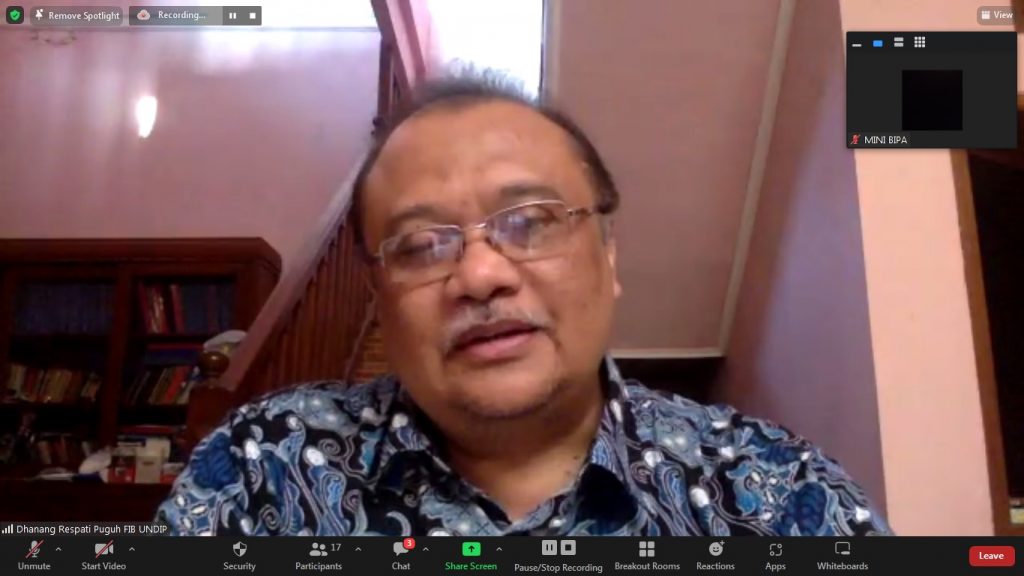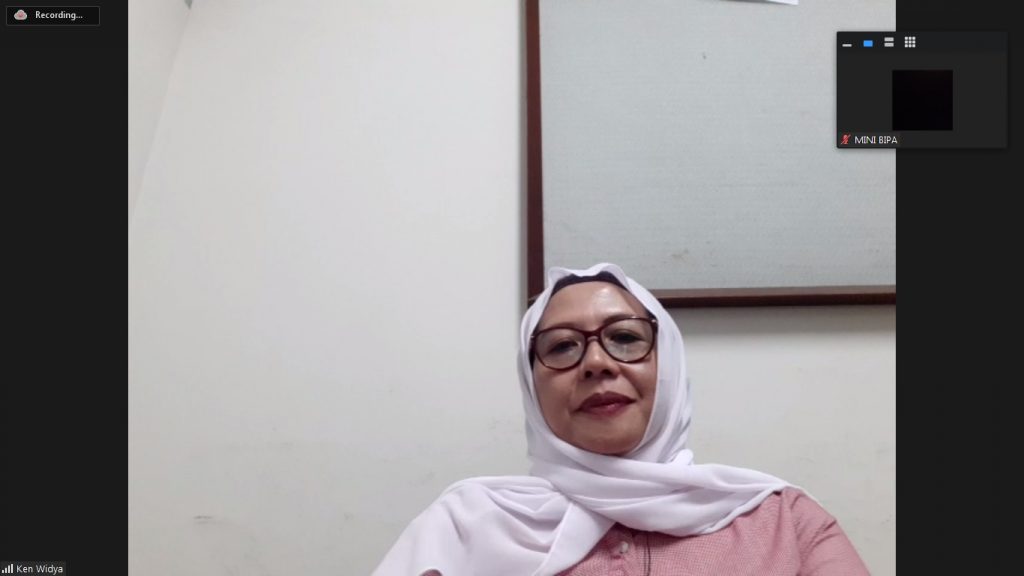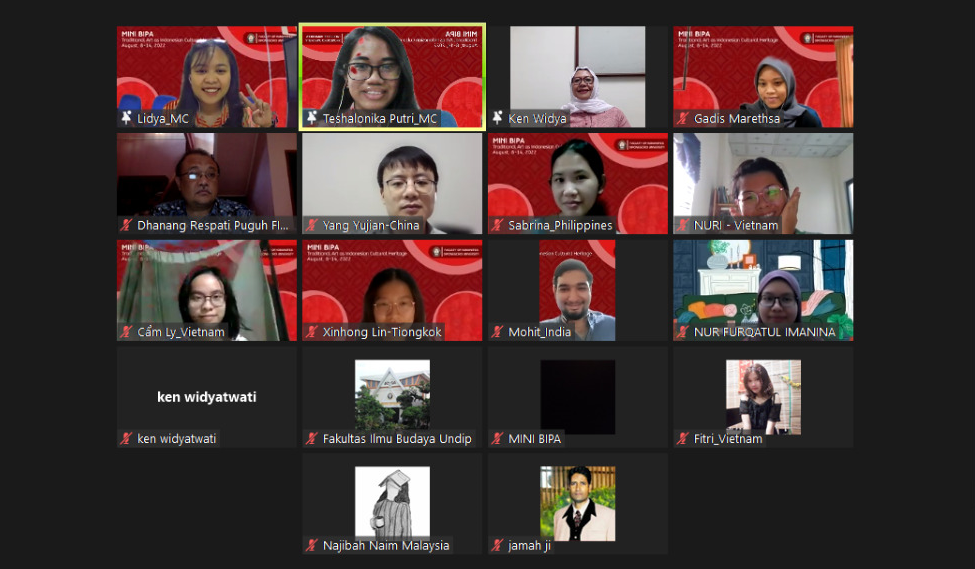The 2022 Summer Course series held by FCS UNDIP, from 8 August to 14 August 2022, has entered its fourth day. Raising the topic “Traditional Art as Indonesian Cultural Heritage”, the participants were still present with the same enthusiasm from the first day. One of the things that made the enthusiasm of the participants consistent, of course, was the interesting material presented by the speakers about traditional Indonesian arts. On this fourth day, the second speaker Dr. Dhanang Respati Puguh, M. Hum. and Dr. Ken Widyatwati, M. Hum. from the Faculty of Cultural Sciences, Diponegoro University, offered interesting material about the traditional arts of Central Java.

The first speaker on the fourth day, Dr. Dhanang Respati Puguh, M. Hum. from the Undip History study program, introduced Gambang Semarang Art to the participants. Dhanang Respati Puguh, M. Hum. explained that the art of Gambang Semarang came from the influence and interaction of Gambang Kromong Jakarta. According to the speaker, Gambang Kromong itself comes from the original music of the indigenous population but is a combination of elements of Chinese and indigenous art.
This art, Gambang Semarang, entered and began to be institutionalized in the 1930s due to the efforts of a figure named Lie Hoe Soen and his friends who wished to “create” the typical art of Semarang. Initially, with the approval of the Mayor of Semarang, a trainer and several Gambang Kromong artists and their equipment were brought in from Jakarta. After that, in its development, the Gambang Kromong association in Semarang gradually became known as Gambang Semarang.
The emergence of Gambang Semarang art groups experienced ups and downs. The period of the Gambang Semarang period was in the 1960-1970s period. Even so, the 1990s was a period of decline in Gambang Semarang. From these results, many parties are trying to participate in preserving and developing it until now. Gambang Semarang itself is an interesting folk performing art because it is a combination of music, sound (vocals), dance, and comedy.

After the description of Gambang Semarang, the next material was presented by Dr. Ken Widyatwati, M. Hum. which explains sintren. Dr. Ken Widyatwati, M. Hum. explains sintren starting from etymology, legend, to its appearance at this time. At the end of the material presentation, a video of sintren dancers and their titles was also shown.
The explanation related to sintren starts from an etymological explanation which explains that ‘sintren’ consists of two words, namely ‘si’ and ‘tren’. The word ‘si’ means ‘she’ while the word ‘tren’ (tri) means ‘princess’. So, the word ‘sintren’ means a princess who is the main character of the dance. Furthermore, sintren is a traditional art of the people of Central Java, especially in the northern coastal areas of Central Java and West Java, including Pemalang, Pekalongan, Brebes, Banyumas, Kuningan, Cirebon, Indramayu, and Jatibarang. This art itself is known as a dance that has magic or is attached to mystical things.
The legend of the sintren itself, according to the speaker, is closely related to the love story between Ki Joko Bahu (Bahurekso) and Dewi Rantamsari. In the past, sintren was held as a dance performance when there was a village cleaning ceremony. Things are different now because sintren can be just a dance performance without any special events. Sintren performances have special requirements regarding the selection of the main dancers. The requirement to become the main dancer must be a girl or a virgin because the dancer must be in a state of purity.
Sintren is held to the accompaniment of gamelan which marks the start of the show. Then, the continuation of the sintren stage is praying and burning incense which is done by the handler. This show contains 1 main dancer accompanied by 4 dancers. In the performance process, the main dancer is put in a cage (cage) and will experience a trance stage. After that, the cage is opened and the main dancer will perform a dance that sometimes looks acrobatic because the dancer performs the dance in a cage. The stage of the dancer who is in a trance and dancing is what makes the sintren dance closely related to religious magical properties. For the show, the lead dancer will be put back in solitary confinement. Then, the handler will bring a brazier filled with incense and recite mantras until the sintren dancer regains consciousness. When he realized, the sintren show was finished.
After two presentations of material from the two speakers, the participants seemed enthusiastic. Several questions and discussions closed the Summer Course series of events on the fourth day and will continue until the end of the event on Sunday, August 14, 2022. (YF)


Recent Comments